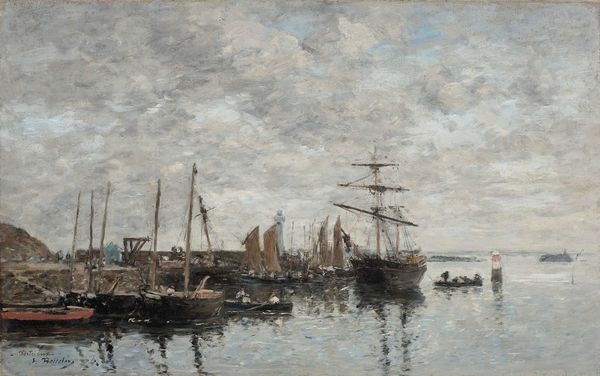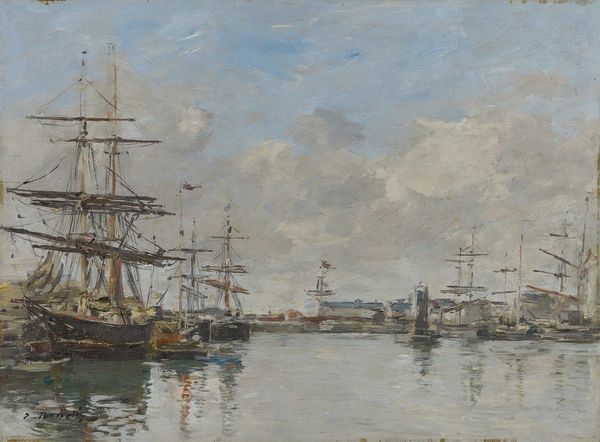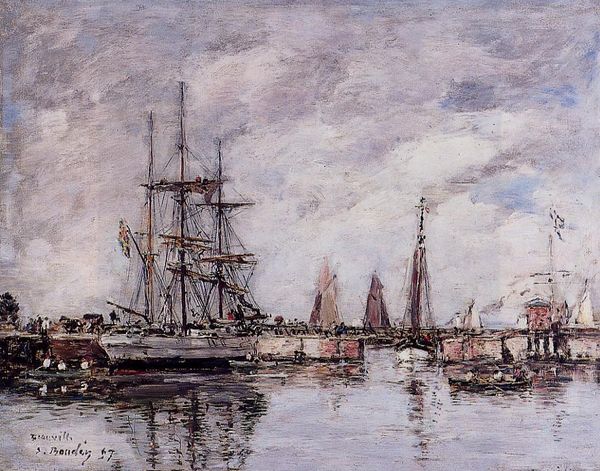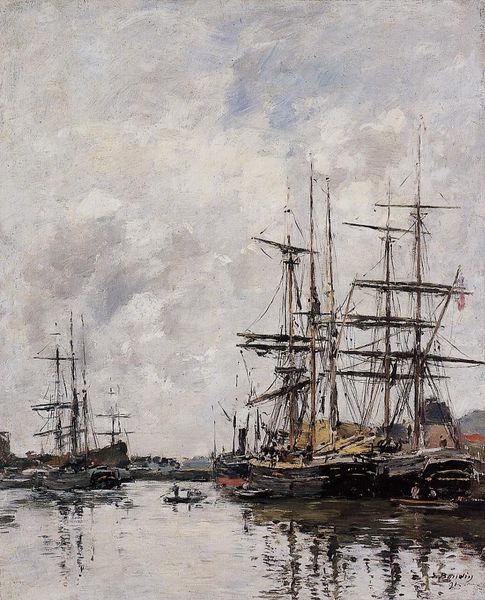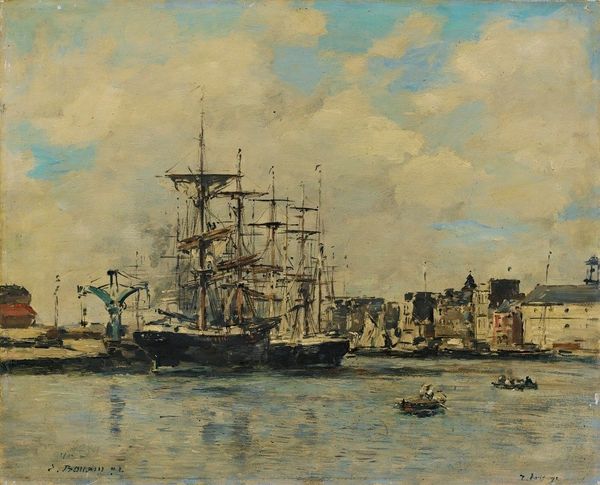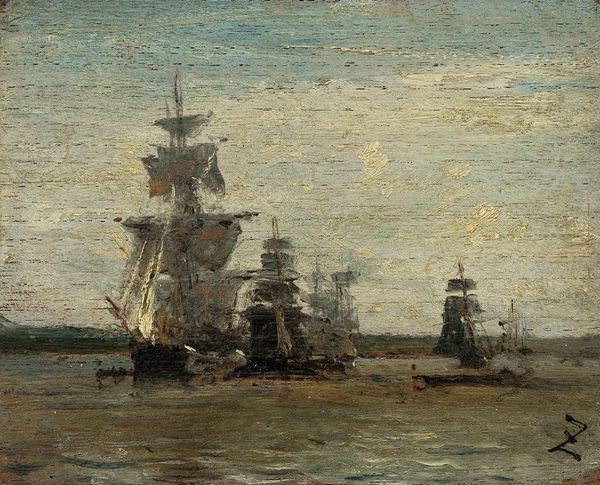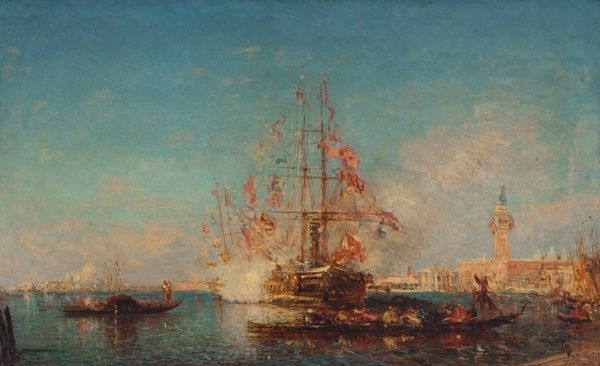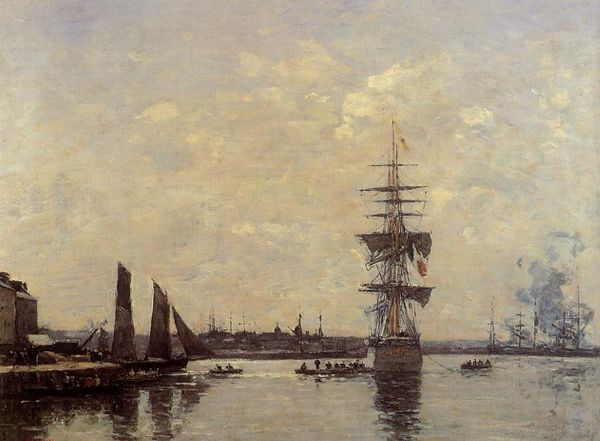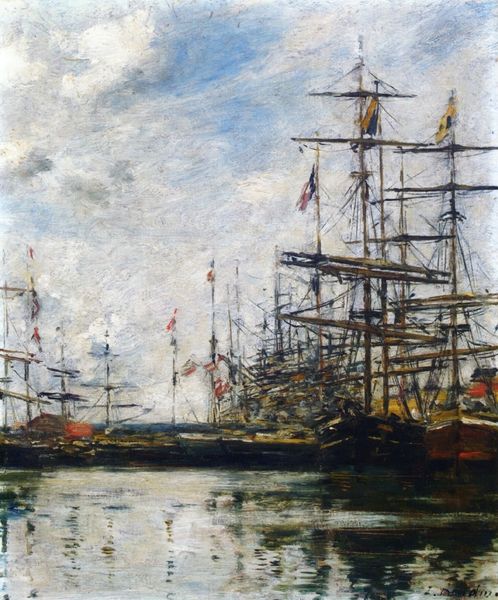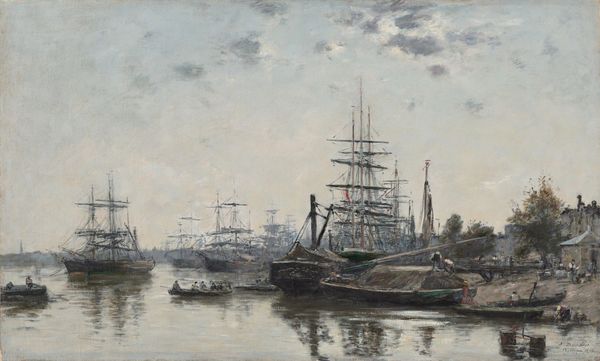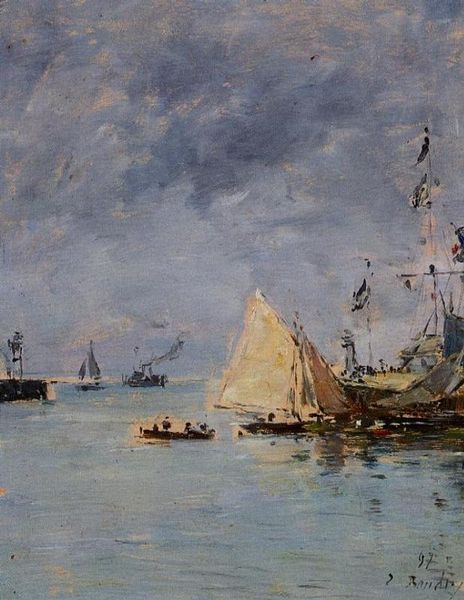
plein-air, oil-paint
#
impressionism
#
plein-air
#
oil-paint
#
landscape
#
oil painting
#
cityscape
#
watercolor
#
realism
Copyright: Public Domain: Artvee
Editor: This is Eugène Boudin's "Entrance to the Harbor, Le Havre," painted in 1883. It feels almost monochromatic, like a faded memory, all muted blues and grays. There's something very calming about it, despite the industrial activity. What catches your eye in this piece? Curator: It’s funny you say 'calming,' because for me, there's a poignant, almost melancholic air about it. Boudin, master of the "plein-air," really captures that fleeting light, that ephemeral moment where the industrial collides with nature’s rhythms. See how the smoke almost mirrors the clouds? It's a dance of industry and atmosphere. Do you think he romanticized it, or do you sense a bit of critique there? Editor: That’s interesting, I hadn't considered the smoke as mimicking the clouds - there may be romanticism, I think, the boats look majestic - maybe idealizing how the rise of industry connected cities through trade, making the port dynamic? Curator: Precisely! He immortalized a scene that was constantly shifting, wasn't he? His paintings become little time capsules, imbued with his experience and offering a window into ours. You might know that Monet described Boudin as his mentor... Editor: Really? Wow! Curator: Indeed! A wonderful detail in the play of perception between artist and his surrounding - Boudin managed to instill this notion to Monet’s later paintings. Looking at the paintings through an ecological lens invites deeper investigation as well! Editor: I never would have thought of that before! This has totally shifted my perspective, that melancholy makes a lot more sense now. Curator: Absolutely, art can be approached from all these dimensions.
Comments
No comments
Be the first to comment and join the conversation on the ultimate creative platform.

